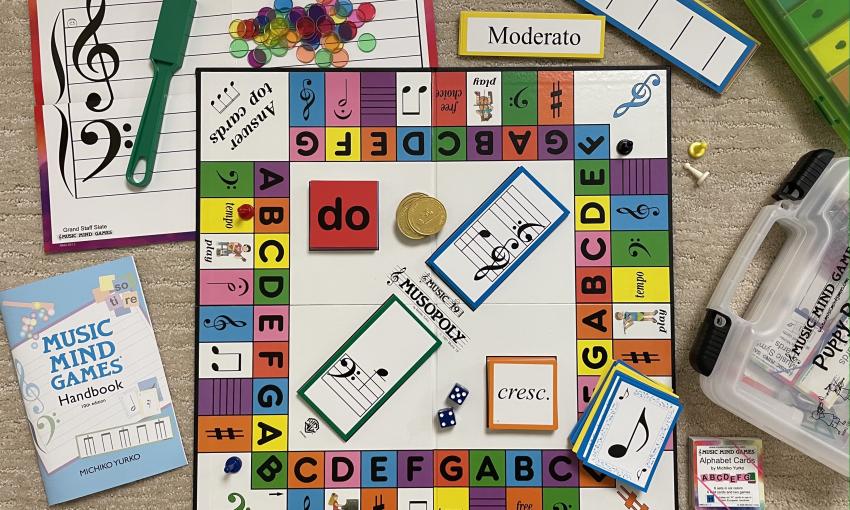
In Brief:
Musopoly has thrills and challenges, just like the classic American real estate trading game. Music theory, music reading skills, performance, and goodwill are all reinforced in a short time. Additionally, players help and learn from each other as they collect rhythm playing cards and gold coins.
Objectives:
Musopoly, which means “many musicians having fun together,” is a fun board game that includes ten components of music theory and reading: alphabet & intervals, dictation & sight-singing, grand staff notes, grand staff related to instruments, musical symbols, performance, reading rhythm, rhythm math, solfége, and tempos
There are three basic ways to play Musopoly:
1. LEARN: Use fewer materials, experience the game, and with a teacher/parent’s help, learn answers during play. Students will become more independent with each session.
2. PLAY: Be prepared to answer the cards, read the rhythms, take dictation, and perform solos with confidence. It is exhilarating when players can easily zip around the gameboard, answering questions and performing.
3. STAY IN SHAPE: Play Musopoly regularly to reinforce learned concepts and create an efficient, motivational, and highly social setting for performance and cover various music theory subjects.
Prerequisite Concepts:
To ensure that the game is viewed as fun and exciting, teachers and parents should introduce Musopoly at the right time in a child’s musical education. When students roll the dice, draw cards, and confidently answer the questions, their self-esteem and joy in being musicians flourishes. Prepare by playing many Music Mind Games games and learning about the Music Mind Games Cornerstones.
Teacher's Role:
Sit and play the game with your students, teaching, assisting, and adapting as you play together.
Repetitions:
Often
